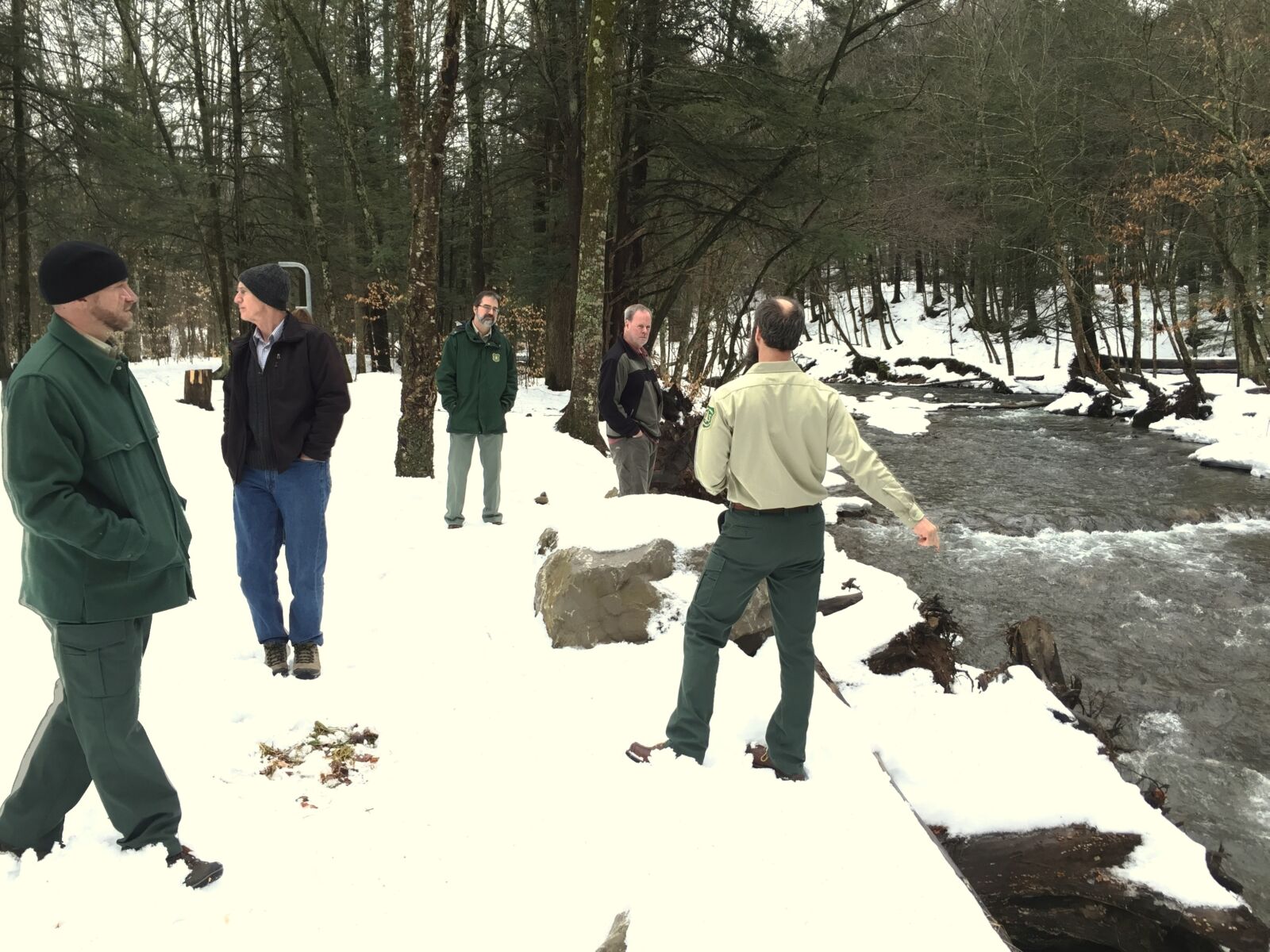With some of the highest elevations in the eastern United States, and as the headwaters of no fewer than six river systems, the Monongahela is a linchpin ecosystem for a vast swath of the Appalachian region. It is also a land still recovering from earlier practices including massive clear-cutting, decades of surface mining and more.
Forest Service staff showed us projects to improve wildlife habitat, to re-establish critical red spruce at higher elevations, and techniques to restore former logging roads. One of the things that impressed me most was how extensively the Monongahela staff are working with nonprofit partners to achieve vital conservation goals. This is a trend we at the NFF see more and more across the nation; in fact, such partnership are something that we foster and even directly support through our grants and capacity building.

Our field trip took us to a variety of sites and landscapes across the midsection of the Forest. The most interesting project to me by far was riparian work on Poca Run, a beautiful creek roughly halfway between Gum Cabin Hollow and The Pigs Ear (I’m not making these up!). Here, the Forest Service recently introduced dozens of tree trunks in the creek, mostly near the banks.
This “woody material” creates subtle deflections of current that harnesses the energy of the stream flow to reestablish the natural meander that is essential for healthy streams. These S-curves:
- provide slower moving pools and eddies for fish,
- allow for more natural sedimentation so stream banks build up over time, and
- actually lower the creek’s temperature which is good for trout.
These projects restore the complexity necessary for them to be resilient to flood and drought, to harbor fish and to resist destructive erosion. We learned that the benefits of these emplacements were apparent almost immediately, a very encouraging sign.
As a major Eastern National Forest within a few hours’ drive
of millions of Americans, the “Mon” occupies a special place. It straddles the
Eastern Continental Divide, is recognized as one of the highest biodiversity
spots in the U.S., and is deeply interconnected with the lives and culture of
its many neighboring communities. While Mark had visited the “Mon” several
times, it was my first trip. It won’t be my last.

